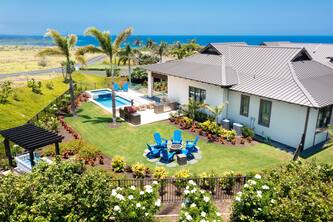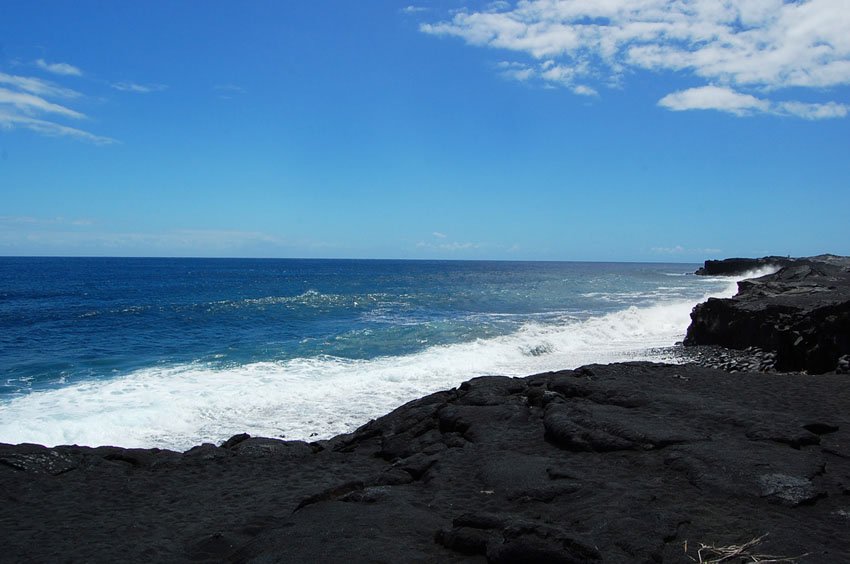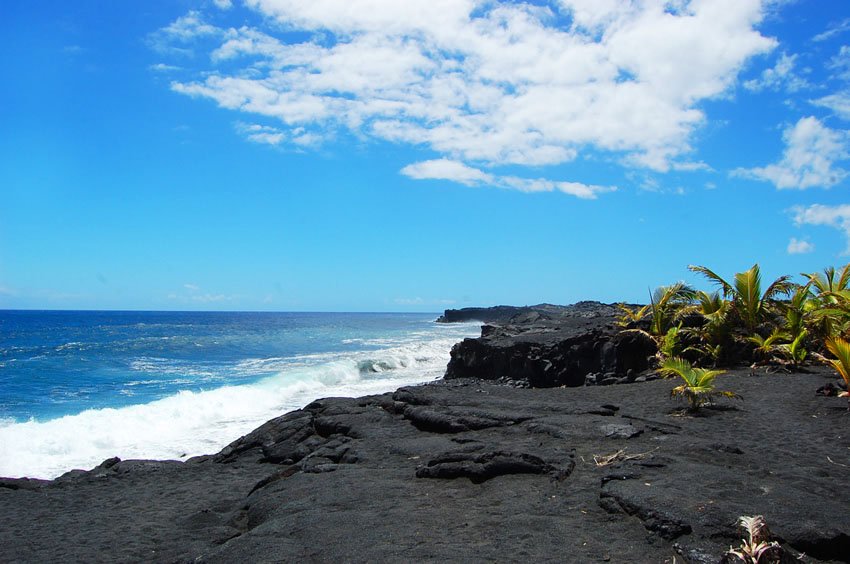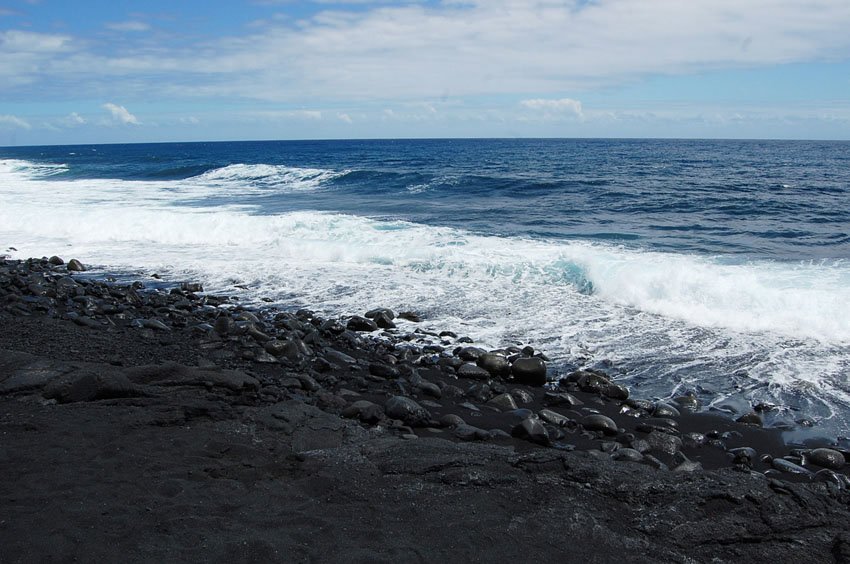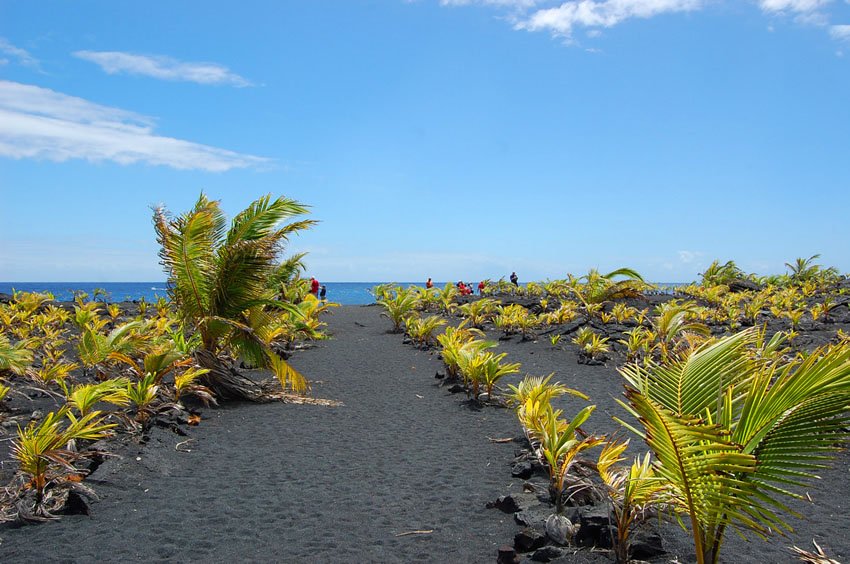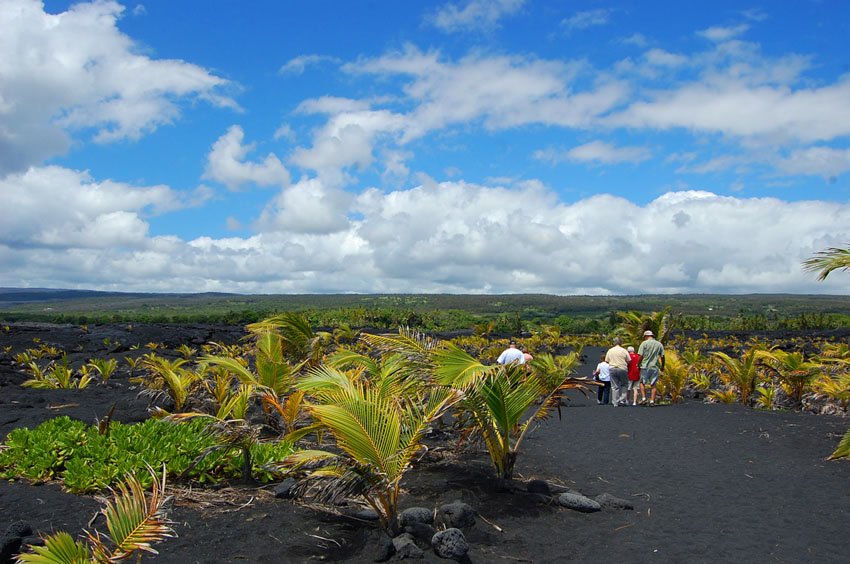New Kaimu Black Sand Beach
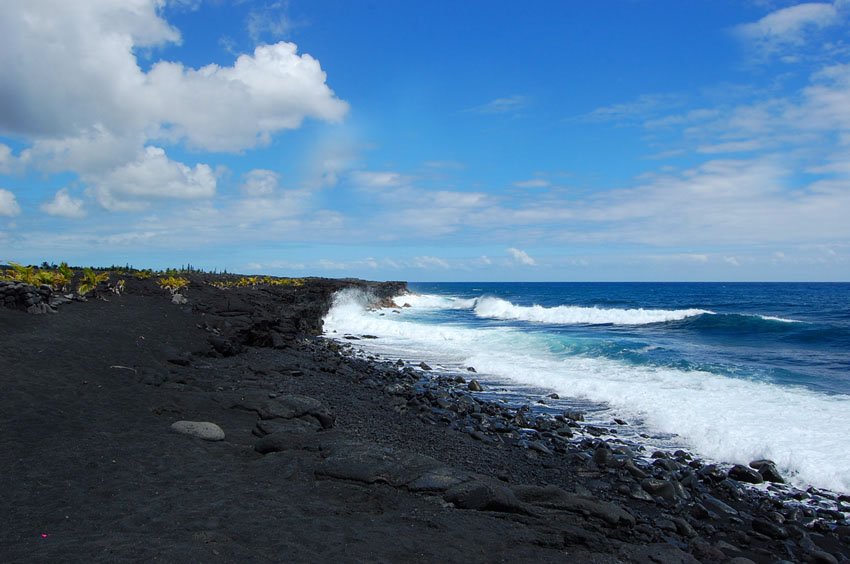
New Kaimu Black Sand Beach is a striking shoreline on the Big Island's southeastern coast, formed by a lava flow in 1990 that buried the original Kaimu Beach and Kalapana village. Today, this raw, evolving landscape features young coconut palms, jet-black sand, and powerful surf. While swimming is not safe, visitors can hike the short Kaimu Eco-Path trail across a lava field to witness nature's ability to rebuild and reclaim.
New Kaimu Black Sand Beach, Big Island
As the name of this beach implies, it is new. In fact, the land that this beach encompasses and the area surrounding it didn't exist a mere 20 years ago. In 1990, a lava flow from nearby Kilauea volcano reached the shoreline at Kalapana and destroyed this entire community along with the neighboring subdivisions of Kaimu and Royal Gardens.
Also buried under 50-75 feet (15-23 m) of lava was Kaimu Black Sand Beach, a beach that was a favorite among local residents and visitors alike because of its fine, jet black sand and stately coconut palms lining the shoreline. In an effort to bring Kaimu Black Sand Beach back to its former glory, new palm trees have been planted on this brand new shoreline land. A small new black sand beach is located near where the old Kaimu Black Sand Beach used to be.
To reach it, drive Kapoho-Kalapana Road or Pahoa-Kalapana Road (Hwy 137 or Hwy 130) all the way to the end. There is a small parking lot near the Kalapana Village Café. From here, walk up the small hill where you'll see a sign that says “Kaimu Beach Eco-Path.” Follow the dirt trail that leads through the lava field. It's about a 5-10 minute walk to the ocean and the beach.
There are no facilities out here, and water activities, including swimming, are not possible due to strong currents and hazardous surf. The beach is just nice to look at and imagine how it will change over the years as all the newly planted coconut palms reach full height.
Key Features of New Kaimu Black Sand Beach
- Formed by lava: Created during the 1990 eruption of Kilauea, which destroyed the original Kalapana and Kaimu Beach.
- Jet-black sand: A small cove of fine black sand, set against rugged lava cliffs and a wild ocean backdrop.
- Kaimu Eco-Path: Scenic walking trail through lava rock to the coast, with interpretive signs and young coconut palms.
- No water access: Swimming and ocean activities are unsafe due to strong currents and hazardous surf.
- Raw natural beauty: A dramatic reminder of the Big Island's volcanic power and continuous geological transformation.
Frequently Asked Questions
How was New Kaimu Beach formed?
It was created by a 1990 lava flow from Kilauea volcano that covered the original beach and surrounding communities under 50–75 feet of lava.
What is the Kaimu Beach Eco-Path?
It's a short, scenic trail through a lava field to the beach, lined with young coconut trees planted to restore the area's natural beauty.
Can you swim at New Kaimu Black Sand Beach?
No, swimming is extremely dangerous here due to rough waves, rip currents, and no lifeguards on duty.
Is it worth visiting if I can't swim?
Yes! It's a dramatic and scenic spot with lava rock formations, ocean views, and a powerful story of volcanic regeneration.
Where do I park?
Park near the Kalapana Village Café at the end of Highway 130. The trailhead is just uphill from the lot.














